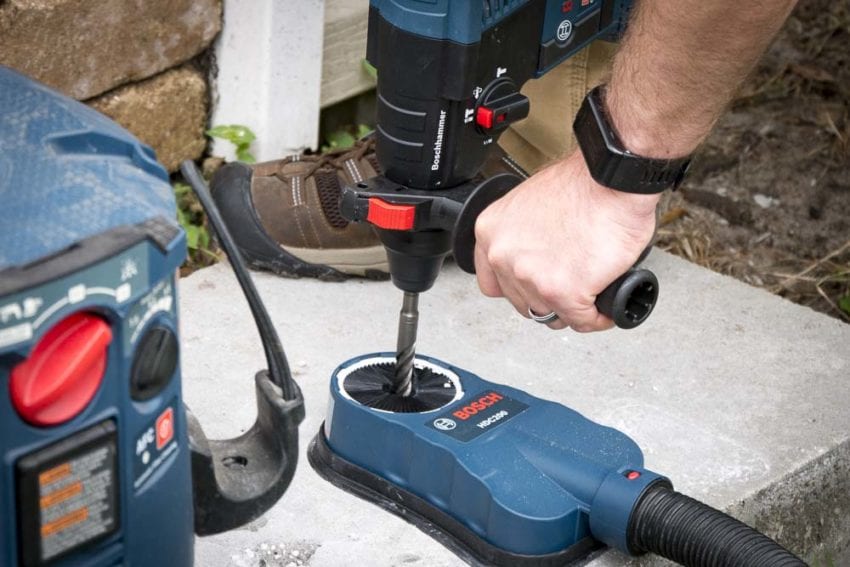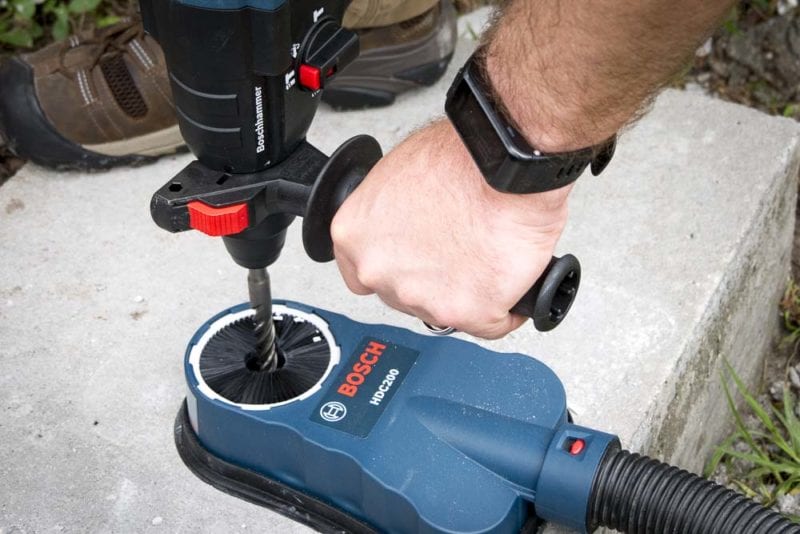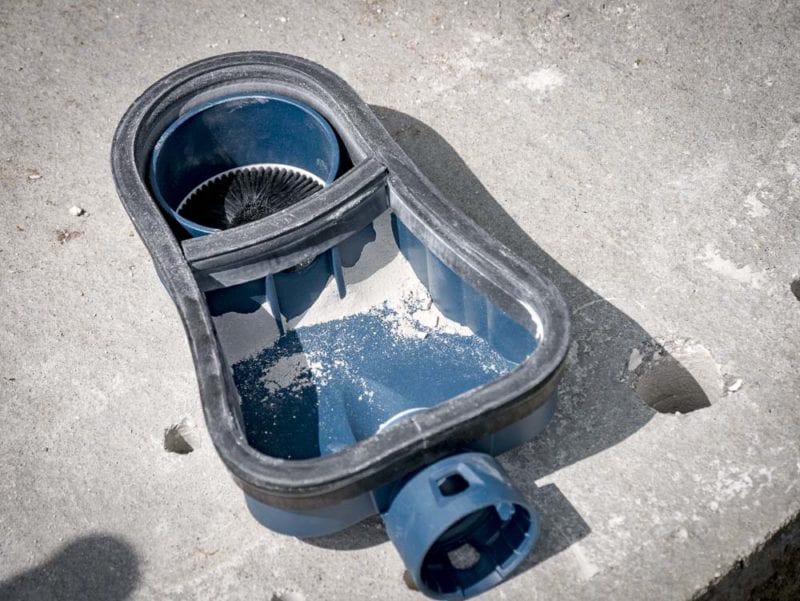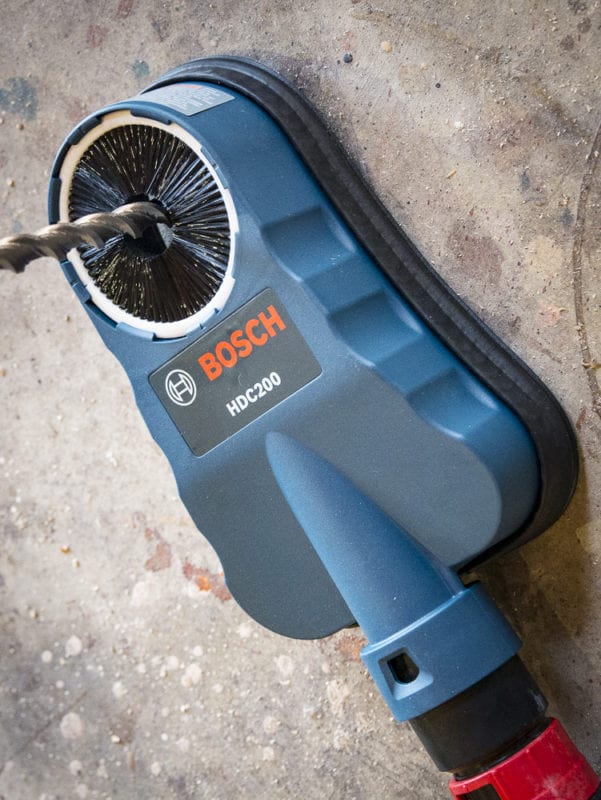Still have a little too much concrete dust floating around your job site? If you happen to drill a lot of concrete, Bosch has a simple solution to avoid getting yet another fine. The Bosch dust shroud, model HDC200, collects dust from around the drill bit as you work. It accommodates a wide range of drill bit diameters and it can save you from inhaling a cloud of silica dust by, inhaling it before you get the opportunity. Let’s dig in a little deeper.
What Does the Bosch HDC200 Do and How Does It Work?
Compatibility
The Bosch dust shroud attaches to any vacuum with anywhere from a 1-3/8″ – 2″ vacuum hose. The easiest connection you’ll get is with a Bosch dust extractor hose like the one that comes on the VAC090A. You just press in the red tabs to release the stock nozzle, then lock it into place on the dust shroud. It’s a simple swap and there’s little to no risk of it coming off accidentally.
With the Bosch HDC200 brush ring in place, you can use bits from 5/8″ to 1-3/8″ in diameter. You can remove it to accommodate bits up to 2″. Because of the design, it’s a universal accessory for any SDS-Plus/SDS-Max rotary hammer with shaft lengths of any size.
Bosch HDC200 Vacuum Suction Design
When the vacuum runs, it provides suction that the dust shroud uses in two ways. Primarily, it pulls concrete dust and small debris into the dust extractor. A look inside reveals a segmented design with a rubber seal that also allows the shroud to stick to the surface you’re working on. It will stay in place if you’re working on the ground, vertically on a wall, or overhead. Incidentally, that seal also prevents dust from escaping through the sides.
When you drill, just site the hole to drill through the hole in the replaceable brush ring and drill away. The brush ring is what gives you the ability to use a range of bit diameters and sweeps dust back into the shroud as you pull the bit out.
Pro Tip: Turn the dust extractor on first so the shroud doesn’t move on you. It’s a must for vertical and overhead drilling.
Extraction Perfection?
As much as I love the simplicity of using the Bosch HDC200, it does have one trade-off you need to keep in mind. In order to work properly, it has to create a seal. If you’re drilling really close to the edge of a wall or in concrete that has other holes in it where you can’t get a seal, you’ll need another option. One you can keep in mind, especially if you’re working on chemical anchors, is Bosch Speed Clean bits.
Final Thoughts
There are a lot of dust collection solutions out there right now to help you comply with OSHA silica dust regulations. When you’re drilling in a place that has access to power for your tools and space for you and your dust extractor, the Bosch dust shroud is one of the easiest and most effective ways to stay Table 1 compliant. Its universal compatibility with any manufacturer’s rotary hammer and $59 price tag make it both versatile and affordable.
For core drilling, Bosch also has the HDC250 to accommodate 1-1/2″ to 6″ core drilling with your SDS-Max rotary hammer.
Bosch HDC200 Dust Shroud Benefits
- Dual air chambers provide for both dust collection during use and provide suction to the wall
- Dust port fits Bosch 1-3/8 In. vacuum nozzle and can convert to 1-1/4 In. / 2 In. hose nozzles
- Replaceable brush ring provides a seal for multiple bit diameters
- Rubber seal maintains suction to the wall
Bosch Dust Shroud Specs
- Model Number: HDC200
- Height: 3″
- Length: 8″
- Material: Plastic
- Max Bit Diameter: 2-5/8″
- Max Hole Diameter – Core Bit: 2-5/8″
- Used on Model Number: Not Tool Specific. Attachment Connects To A Vacuum.
- Weight: 0.7 lb
- Includes: Dust Collection Attachment With Universal Vacuum Adapter.
- MSRP: $55






